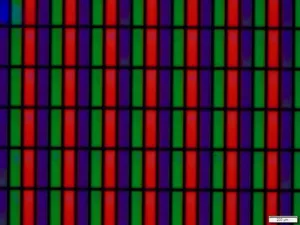Sorry for the overload this week – we (almost) finished our CES report and Matt made a thorough report on the big retail show in New York. We have a few stories from CES that we’ll add next week as we catch up. I thought about holding over the NRF report, but somebody once said to me “News is like sashimi. It’s good when its fresh!”. I know we haven’t been the quickest at getting news out about CES, but I think the level of detail that we got is really good. This year, we tried to get more on automotive and I think we succeeded.
Another reason that I didn’t hold back the NRF report, which is going to all our LDM & MDM subscribers, is that next week we’ll have a report on the BETT education show which took place in London. Most of that is on the large interactive displays that seem finally to be developing beyond the first couple of early adopter countries. With CES, NRF and BETT out of the way, we can focus on ISE, MWC and ECR in February! I’m looking forward to March!
I thought I’d look back at my editorial at the beginning of December that looked forward to CES. I mentioned that I thought there would be some interesting TVs with mini-LEDs in the backlight. I got that one right and Samsung showed (privately) a TV with 10,000 or more backlights. It was phenomenal and only the second LCD that I have seen that is better than an OLED in a side by side comparison (The first was the Eizo grading monitor at IBC in September).
Another thing I was looking forward to was, possibly, Quantum Dot on Glass (QDOG) – using a glass LGP to encapsulate QDs between the LGP and the LCD and reducing the cost (Will QDOG Have its Day?). I didn’t see that, but Dell had a monitor with a glass LGP and Innolux was showing a TV. I also talked to Corning, who have confirmed the broad principles of the advantages of QDOG. The disadvantage is really that the technology is only in edge-lit TVs, which is a minority and there is likely to be an increasing trend to direct-lit sets as mini-LED backlights are developed. On the other hand, QDOG in monitors could be a real advantage, although it’s hard to get monitor buyers to pay more for better colour.
I had hoped to see a panel or TV with an inkjet-printed QD Filter architecture, but I didn’t see one this year. Maybe at SID? Nanosys had a good looking sample in its suite, and development is clearly progressing. This one was never going to be quick and easy, but the prizes of a big boost in efficiency and a solution to viewing angle problems, especially for VA panels, is worth a lot of effort.
Bob
Nanosys showed a sample of Ink Jet Printed QD Colour filter ink. Image:Nanosys

